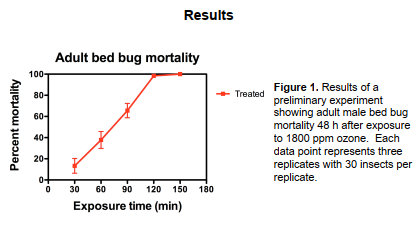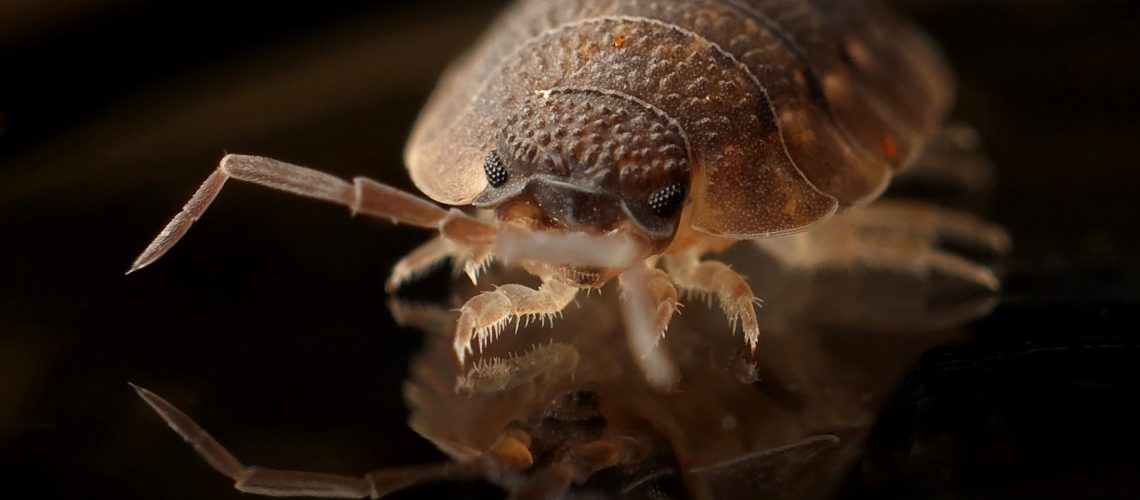Bed bugs have become a significant issue, causing discomfort and distress to millions of people worldwide.
These tiny pests are stubborn and challenging to eradicate. As a result, people are continually seeking effective solutions to eliminate these pesky invaders.
This comprehensive guide examines the bed bug menace, how to identify them, and explores the question:
Does ozone kill bed bugs or other insects?
Bed Bugs: A Global Concern
Bed bugs (Cimex lectularius) have been a thorn in humanity’s side for centuries.
However, recent years have seen a marked increase in infestations globally. Whether it’s in North America, Europe, Asia, or Africa, no region is exempt from these bothersome creatures. They infest not just homes but also hotels, dormitories, hostels, and even public transportation.
Bed bugs are small, flat, wingless insects, varying in size from 1mm to 7mm. They have a reddish-brown hue and feed on the blood of humans and animals, primarily during nighttime.
Despite their preference for cleanliness, they can survive for several months without feeding.
Identifying a Bed Bug Infestation
The most apparent sign of a bed bug infestation is bite marks on exposed skin while sleeping.
These marks can take up to 14 days to appear, depending on individual reactions. Other signs include:
- Shed exoskeletons or shells after molting.
- Bed bugs hiding in mattresses, sheets, furniture, and wallpaper.
- Rusty-colored blood spots from their excreted fecal material.
- A distinct musty odor.
The Consequences of Bed Bugs
Bed bug bites can lead to a variety of skin reactions.
While some people might not have visible bite marks, others could develop small bite spots or severe allergic reactions.
Though not considered dangerous, these reactions can be quite uncomfortable, requiring medical attention in some cases.
The Journey of Bed Bugs
Bed bugs are exceptionally good at hiding and traveling unnoticed.
They often hitch rides on luggage, clothes, bedding, and furniture, moving from one place to another.
Most people are unaware of these unwanted travelers, leading to the spread of infestations.
Traditional Bed Bug Treatments and Prevention
Bed bug infestations are usually addressed through insecticide spraying.
However, if an infestation is suspected, it is recommended to contact a professional pest control service experienced in handling bed bugs.
Preventive measures include regular inspections for any signs of infestation.
The Life Cycle of a Bed Bug
Bed bugs go through several stages in their lifecycle, starting from an egg.
A female bed bug can lay around five eggs per day in sheltered areas, like mattress seams, crevices in box springs, and underneath baseboards. The eggs hatch into nymphs, which must feed before molting to the next stage. They undergo five nymphal stages, each requiring a blood meal.
After the fifth stage, the nymph transforms into an adult, which can live for 6-12 months and survive for long periods without feeding.
The Effectiveness of Pesticides Against Bed Bugs
Though pesticides can kill bed bugs, their effectiveness is determined by several factors.
These include the extent of the infestation, the thoroughness of preparation and pesticide application, and whether the pesticide targets all life stages. It’s also crucial to consider if the bed bug population has developed resistance to the specific pesticide or its class.
Integrated Pest Management (IPM) techniques, including continued monitoring and vigilance against reintroduction, are crucial for successful eradication.
Can Ozone Kill Bed Bugs?
As it stands, there’s ongoing research into this method of eradication.
No definitive conclusions have been reached so far.
However, I have corresponded with Dean, Dr. Linda J. Mason at the Department of Entomology, Purdue University, West Lafayette, IN regarding their work on the effect of ozone gas on various insects, including bed bugs.
Here are some of the findings she shared with me…
Evaluating the Impact of Ozone on Bed Bugs
By James Feston, Marissa McDonough, Linda Mason, Timothy Gibb, Kurt Saltzmann
Context
Recently, the application of gaseous ozone as a pest control strategy has gained considerable attention.
Prior studies have primarily examined its impact on pests in stored products (Kells et al. 2001, Sousa et al. 2008, McDonough et al. 2011). With the re-emergence of bed bugs in the U.S. and globally in the past decade, the potential of incorporating ozone into bed bug integrated pest management programs is being explored.
Our laboratory is currently undertaking research to clarify this potential.
Preliminary data suggest that adult male bed bugs are susceptible to ozone, the degree of susceptibility being a function of ozone concentration and exposure duration. This study used two ozone delivery devices, one for high concentrations with short exposure times, and another for low concentrations with longer exposure times.
The research aims to 1) identify the duration and concentration of ozone needed to achieve 100% mortality across all bed bug life stages, and 2) further understand the mechanism by which ozone affects insects and the survival strategies insects may adopt in response to ozone exposure.
Methodology
High Ozone Concentration and Short Exposure Time
- We used a bed bug strain collected from Indianapolis, IN in 2009 for all tests.
- Ozone was continually delivered within a chamber inside a lab fume hood at room temperature.
- The insects’ status (alive, knocked down, or dead) was recorded at 0, 24, and 48 hours after treatment.
- We tested one ozone concentration across five exposure durations.
Low Ozone Concentration and Long Exposure Time
- We used the same bed bug strain as in the previous experiment.
- The experiments were carried out in a benchtop fumigation chamber under room temperature and 80% relative humidity.
- We conducted each trial in the presence of either 1% or 2% hydrogen peroxide vapor.
- We recorded insect statuses at 0, 24, and 48 hours, and seven days post-treatment.
- We tested one ozone concentration across three exposure durations.
Findings
Our preliminary experiments indicated that adult male bed bugs were susceptible to high concentrations of ozone exposure over relatively short periods.
We achieved 100% mortality when bed bugs were exposed to 1800 ppm ozone for 150 minutes. When we tested a lower ozone concentration alongside 1% hydrogen peroxide, we observed 100% mortality after 48 hours of exposure. However, 48 hours of exposure to 80 ppm ozone and 2% hydrogen peroxide did not result in 100% mortality, leading to further tests with exposure times of 72 hours.
We are currently conducting experiments to determine mortality rates in the immature life stages of bed bugs following ozone exposure.

So there you have it.
Ozone has been proven to eradicate bed bugs at 100% mortality rate in a laboratory environment!
The problem is…
It takes 1,800 PPM concentration of ozone to accomplish this.
There are 2 major issues with that:
- That concentration is very difficult to reach and maintain in a residential or commercial setting.
- Most of the items that you would be seeking to sanitize and rid of bed bugs would disintegrate and/or severely discolor after being exposed to this ultra-high level of ozone.
(For further information on the effective use of ozone to sanitize various environments have a look at our article, “Absolute Safest Ways to Use Ozone.”)
Hence, although technically possible, we can discard the idea as highly impractical.
Can Ozone Kill Other Insects?
Even though it is clearly impractical to use ozone to eradicate bed bugs, this does not apply equally to other insects and pests.
Turns out, not all insects are the same. (Who knew?)
Another study published by the same team at Purdue caught my attention.
This one focused on, ” Efficacy and fumigation characteristics of ozone in stored maize.”
Here’s a summary of the abstract:
This study examined the effectiveness of using ozone gas to kill bugs and reduce fungal contamination in stored maize. They treated a large amount of maize with a low concentration of ozone for three days. The results showed that the ozone treatment resulted in a high mortality rate (92-100%) of adult red flour beetles, adult maize weevils, and larval Indian meal moths. It also reduced the fungus contamination on the maize kernels by 63%. The study identified two distinct phases of ozone fumigation, with the second phase being more effective as ozone flowed freely through the grain. The study determined the optimal speed at which ozone should flow through the grain for deep penetration.
Overall, the findings demonstrate the potential usefulness of ozone in managing pests and fungal contamination in stored maize and other grains.
Here’s a link to the full study if you want to dig deeper.
More studies have been conducted and published in recent years by other research teams and are showing promising results as well.
To sum it up, there’s too much nuance involved to simply state that ozone kills insects.
But we can say this…
Understanding and ongoing research into alternative eradication methods like ozone are crucial in the continuous fight against bed bugs and other stubborn pests.


